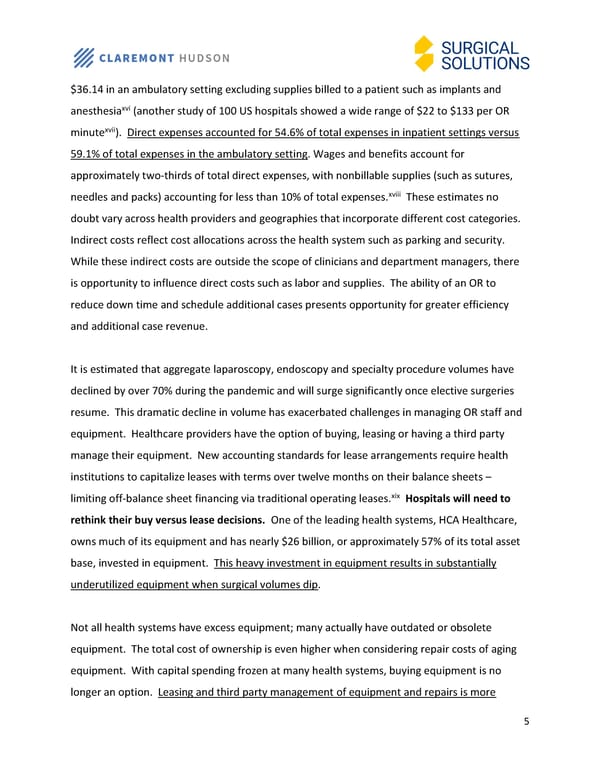$36.14 in an ambulatory setting excluding supplies billed to a patient such as implants and xvi anesthesia (another study of 100 US hospitals showed a wide range of $22 to $133 per OR xvii minute ). Direct expenses accounted for 54.6% of total expenses in inpatient settings versus 59.1% of total expenses in the ambulatory setting. Wages and benefits account for approximately two-thirds of total direct expenses, with nonbillable supplies (such as sutures, xviii needles and packs) accounting for less than 10% of total expenses. These estimates no doubt vary across health providers and geographies that incorporate different cost categories. Indirect costs reflect cost allocations across the health system such as parking and security. While these indirect costs are outside the scope of clinicians and department managers, there is opportunity to influence direct costs such as labor and supplies. The ability of an OR to reduce down time and schedule additional cases presents opportunity for greater efficiency and additional case revenue. It is estimated that aggregate laparoscopy, endoscopy and specialty procedure volumes have declined by over 70% during the pandemic and will surge significantly once elective surgeries resume. This dramatic decline in volume has exacerbated challenges in managing OR staff and equipment. Healthcare providers have the option of buying, leasing or having a third party manage their equipment. New accounting standards for lease arrangements require health institutions to capitalize leases with terms over twelve months on their balance sheets – xix limiting off-balance sheet financing via traditional operating leases. Hospitals will need to rethink their buy versus lease decisions. One of the leading health systems, HCA Healthcare, owns much of its equipment and has nearly $26 billion, or approximately 57% of its total asset base, invested in equipment. This heavy investment in equipment results in substantially underutilized equipment when surgical volumes dip. Not all health systems have excess equipment; many actually have outdated or obsolete equipment. The total cost of ownership is even higher when considering repair costs of aging equipment. With capital spending frozen at many health systems, buying equipment is no longer an option. Leasing and third party management of equipment and repairs is more 5
 Operating Room Insourcing Versus Outsourcing Page 4 Page 6
Operating Room Insourcing Versus Outsourcing Page 4 Page 6